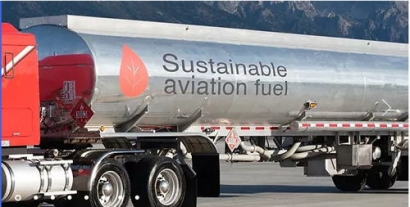
The new guide, titled, Fueling the Future, serves as an educational and informational resource about the practicalities of SAF development, industry adoption, and pending expansion of supply and use, primarily from the perspectives of the business aviation community.
SAF blending components are made from bio-based or other circular-economy feedstock sources. On a gallon-per-gallon basis, these low-carbon components often reduce net lifecycle CO2 emissions in excess of 50%, versus conventional jet fuel. Industry innovators are additionally planning to produce SAF blending components with deeper reductions, and in some cases more than 100%, making the fuels carbon negative. SAF is a proven and trusted replacement for traditional jet fuel that will help lower the industry’s carbon footprint. SAF has been used continuously at select airports since 2016, and its production is expected to scale significantly during the next five years.
“The single-largest potential reduction in aviation’s GHG emissions — and the key to reaching our goals — will come about through the broad adoption of sustainable aviation fuel in place of the current conventional jet fuel,” the coalition concludes in the guide.
The SAF Coalition – which includes the Commercial Aviation Alternative Fuels Initiative, the European Business Aviation Association, the General Aviation Manufacturers Association, the International Business Aviation Council, the National Air Transportation Association and the National Business Aviation Association – developed the guide.
The coalition’s Steering Committee includes dozens of aviation businesses, representing every point in the SAF development-and-supply chain, and all of which provided real-world expertise in the development of the guide. A list of SAF Coalition Steering Committee companies is provided on the group’s website homepage.
The SAF Coalition’s guide builds upon a host of initiatives to educate industry leaders, policymakers and others on the benefits and viability of SAF.
For example, in January 2020, the coalition introduced SAF for business aviation consumption at Zurich Airport, in conjunction with the World Economic Forum.
“It is very encouraging to see the continuously increasing interest from the business aviation community to use SAF to address sustainability goals,” commented Steve Csonka, CAAFI executive director. “Although a modest user of the worldwide production of jet fuel, their exuberant interest in acquiring supply will clearly help accelerate SAF production ramp-up, one of the entire aviation industry’s key needs. We hope this guide helps amplify the opportunity and response.”
“The increasing need for strong coordination and communication as supply of, and demand for, SAF continues to grow are key components of general and business aviation’s commitment to addressing climate pchange,” said Pete Bunce, GAMA president and CEO.
“We are thrilled to present this second edition of the SAF Guide,” said NATA president and CEO Timothy Obitts. “The coalition’s goal has always been to increase the production and use of SAF, and education through this guide is key to that mission. Many thanks to all those who put in a tremendous effort to make relevant updates and information available to the public.”

